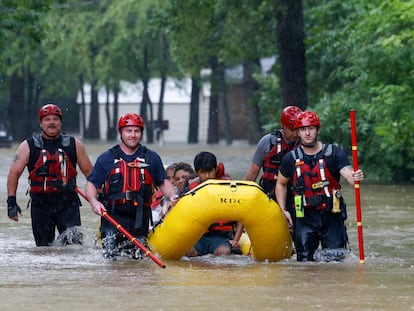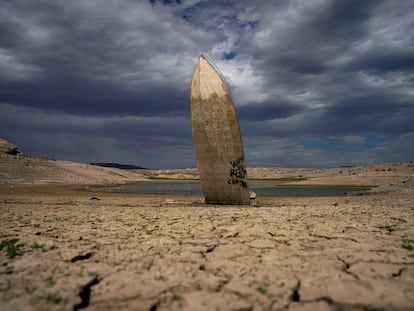California enters its fourth year of drought with little hope for improvement
The last three years have been the driest on record since 1896, the first year such data was collected


California is entering its fourth year of drought. Friday marked the close of another year in California’s water cycle: October 1 is the first day of the new hydrologic year, a 12-month period that is used to compile water records. It also represents the start of the state’s rainy season, but on Monday, meteorologists at the National Weather Service predicted another year of water scarcity and hardship. This forecast extends the three-year-long plight of the most populous state in the United States; the span is the driest on record, surpassing the 2013 to 2015 drought emergency that ended with unusually heavy winter rainfall.
“”This is our new climate reality, and we must adapt,” said California Department of Water Resources (DWR) Director Karla Nemeth on Monday. In a statement, she reviewed the extreme conditions the region has experienced in recent weeks – intense and long heat waves and heavy rains. However, that precipitation has only benefited isolated parts of the state; it has not reversed the drought that continues to plague this agricultural powerhouse.
These rains have left two of California’s most important reservoirs, Lakes Oroville and Shasta, at better levels than a year earlier in 2021. Even so, the bodies of water are at 40% and 30% of their respective capacities. Those levels are below average and far short of what Water Commission experts recommend. Lake Mead is also at alarmingly low levels. Authorities have warned that if the water level drops another 45 meters, it could cause the Hoover Dam to stop functioning.
The 2022 water year – from October 1, 2021 to September 30, 2022 – ended with precipitation levels at 76% of the average. These levels were boosted by rainfall from two “extremely rare” weather events in September: Hurricane Kay left a rain band in Southern California, and a storm that originated in Alaska led to precipitation in the state’s central and northern regions.
The state’s reservoir system is at 69% of its capacity, an insufficient figure given that 95% of California is experiencing extreme, exceptional or severe drought, the three worst categories, according to the Department of Agriculture, which monitors the trend.
Last October began with rain and snowfall in the mountains, a crucial process that helps the state maintain a constant water supply over time. That precipitation extended into December. Soon after, California experienced extreme weather events, which have become increasingly more common. The extended wet period was followed by the state’s driest quarter – from January through March – in over a century. This year ended up being drier and warmer than 2013, a year that was characterized by inhospitable climate conditions. Together with the previous two years, the past three years represent the driest period the state has experienced since 1896, the first year for which such data has been recorded.
“We are preparing now for continued extreme drought and working [...]to plan for a future where we see less overall precipitation and more rain than snow,” alerted DWR chief Nemeth. Additionally, experts have noted that the La Niña phenomenon, a high-pressure system over the tropical part of the Pacific for the past two years, could worsen the region’s dry conditions.
The Geographic Area Coordination Center, a group made up of several government organizations, has also warned of the uncertainty ahead. The rainfall of the summer only was a blip in an overarching dry pattern which is likely to continue into the winter, said the center, warning about is “large potential” for large wildfires over the winter because of the dry leaves and grasses that can catch fire coupled with the lack of rain.
That situation prompted authorities to say on Monday that new, more stringent water conservation measures might be necessary to complement the ones announced over the summer. That means that California counties and the complex water systems that supply urban and agricultural areas will receive less water than they requested. Indeed, some have received only 5% of the water that they asked for, forcing several mayors to implement draconian water conservation measures that prevent irrigation or outdoor water use. Farmers have had to sacrifice 200,000 hectares of almonds, tomatoes and grapes, some of the state’s most important agricultural crops.
Governor Gavin Newsom, a Democrat, has asked citizens to reduce their residential water use by 15%. Californians have saved only 4% of their supply since the governor enacted the program in the summer of 2021. Officials emphasized that a sense of alarm has taken hold. In July, the last month for which statistics are available, the state had a water savings of 10.5% compared to 2020. Even stricter measures may be adopted in the coming weeks.
Tu suscripción se está usando en otro dispositivo
¿Quieres añadir otro usuario a tu suscripción?
Si continúas leyendo en este dispositivo, no se podrá leer en el otro.
FlechaTu suscripción se está usando en otro dispositivo y solo puedes acceder a EL PAÍS desde un dispositivo a la vez.
Si quieres compartir tu cuenta, cambia tu suscripción a la modalidad Premium, así podrás añadir otro usuario. Cada uno accederá con su propia cuenta de email, lo que os permitirá personalizar vuestra experiencia en EL PAÍS.
¿Tienes una suscripción de empresa? Accede aquí para contratar más cuentas.
En el caso de no saber quién está usando tu cuenta, te recomendamos cambiar tu contraseña aquí.
Si decides continuar compartiendo tu cuenta, este mensaje se mostrará en tu dispositivo y en el de la otra persona que está usando tu cuenta de forma indefinida, afectando a tu experiencia de lectura. Puedes consultar aquí los términos y condiciones de la suscripción digital.
More information
Archived In
Últimas noticias
Most viewed
- Sinaloa Cartel war is taking its toll on Los Chapitos
- Oona Chaplin: ‘I told James Cameron that I was living in a treehouse and starting a permaculture project with a friend’
- Reinhard Genzel, Nobel laureate in physics: ‘One-minute videos will never give you the truth’
- Why the price of coffee has skyrocketed: from Brazilian plantations to specialty coffee houses
- Silver prices are going crazy: This is what’s fueling the rally










































